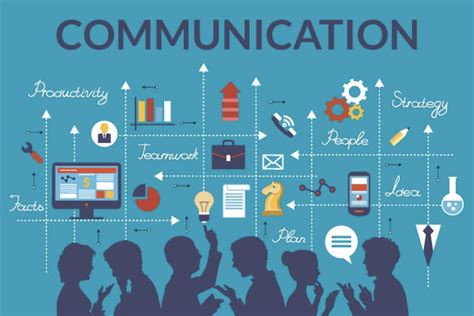Discover the essential strategies for effective team building and communication in the workplace. Improve relationships, trust, and collaboration for long-term success.
Understanding the Importance of Team Building
Understanding the Importance of Team Building
Team building is an essential aspect of any successful organization. It is the process of creating a strong sense of unity and collaboration among team members. When individuals within a team work together effectively, it can lead to increased productivity, improved morale, and better overall performance. Strong teamwork can also help to foster a positive work environment, as employees feel supported and valued by their colleagues. In addition, team building can promote creativity and innovation, as members of the team are more likely to share ideas and work together to solve problems.
Moreover, team building activities can help to identify strengths and weaknesses within the team. By understanding each team member’s unique skills and abilities, leaders can make more informed decisions about task assignments and project management. This can ultimately lead to more efficient and effective outcomes, as individuals are placed in roles that play to their strengths. By recognizing the importance of team building, organizations can create a more cohesive and harmonious work environment, where employees feel motivated and engaged in their work.
Overall, understanding the importance of team building is crucial for the success of any organization. By prioritizing teamwork and communication, companies can create a supportive and inclusive culture that benefits both employees and the bottom line. Investing in team building initiatives can lead to improved relationships, increased productivity, and a more positive work environment, ultimately leading to greater success for the entire organization.
Identifying Communication Challenges within the Team
One of the critical aspects of successful team building within a corporate environment is the identification of communication challenges within the team. In order to foster effective collaboration and productivity, it is essential to recognize and address any barriers to clear and efficient communication. This involves not only understanding the specific issues that may be present, but also exploring the underlying factors that contribute to these challenges.
It is important to actively listen to team members and solicit their input regarding their experiences with communication within the team. This may involve conducting surveys or engaging in open discussions to gather insights into any obstacles that may exist. In addition, it is crucial to observe the dynamics of the team during meetings and collaborative tasks in order to identify any patterns of miscommunication or misunderstanding. By actively seeking out and acknowledging the communication challenges that may be present, a foundation can be established for implementing targeted strategies to address these issues.
Furthermore, it is imperative to acknowledge the diversity of communication styles and preferences that may exist within the team. Different individuals may have unique approaches to communication, and it is essential to recognize and respect these differences. By offering training and development opportunities that cater to a variety of communication preferences, team members can enhance their ability to effectively navigate and overcome communication challenges. Ultimately, by identifying communication challenges within the team, organizations can pave the way for improved collaboration, productivity, and overall success.
Creating Engaging Team Building Activities
When it comes to building a strong and cohesive team, engaging team building activities are essential. These activities not only help to improve communication and collaboration among team members, but also foster a sense of camaraderie and trust. By creating activities that are enjoyable and challenging, employees are more likely to actively participate and invest in the team building process.
One effective way to create engaging team building activities is to consider the interests and preferences of the team members. Whether it’s a scavenger hunt, a team sports event, or a group problem-solving activity, it’s important to ensure that the activities are appealing to the individuals involved. Additionally, incorporating a healthy level of competition can add an element of excitement and motivation to the activities.
Furthermore, it’s important to debrief and reflect on the team building activities afterwards. This allows team members to discuss their experiences, share insights, and identify any areas for improvement. By creating a space for open and honest communication, team building activities can have a lasting impact on the overall dynamics of the team.
Implementing Effective Communication Strategies
Implementing effective communication strategies is crucial for the success of any team. Without clear and open communication, misunderstandings can arise, leading to conflict and reduced productivity. One key strategy for improving communication within a team is to establish regular meetings or check-ins where team members can openly discuss their tasks, challenges, and progress. This allows for a better understanding of each other’s roles and helps to prevent any miscommunications.
Another important aspect of effective communication is the use of active listening. Team members should be encouraged to listen attentively to each other’s ideas and concerns, without interrupting or dismissing them. This not only fosters a sense of respect and understanding within the team but also helps to prevent any misunderstandings that may arise due to unclear communication.
Furthermore, utilizing various communication tools and platforms can also greatly improve the efficiency and effectiveness of team communication. Whether it’s through email, instant messaging, or project management software, having the right tools in place can help facilitate clear and timely communication among team members. It’s important to ensure that everyone is comfortable with and has access to these communication tools in order to avoid any barriers to effective communication within the team.
Measuring the Impact of Team Building Efforts
Measuring the Impact of Team Building Efforts
Team building activities are a vital component of creating a cohesive and productive work environment. Whether it’s through problem-solving challenges or trust-building exercises, team building activities are designed to improve communication, collaboration, and overall team dynamics within an organization. However, it’s crucial for companies to measure the impact of these efforts to ensure that they are yielding positive results.
One way to measure the impact of team building efforts is through employee feedback and surveys. By gathering feedback from employees who have participated in these activities, companies can gain valuable insights into the effectiveness of the activities and identify areas for improvement. Additionally, surveys can provide data on how well the activities have improved teamwork, communication, and morale among team members.
Another method for measuring the impact of team building efforts is through tracking key performance indicators (KPIs) before and after the activities. This can include metrics such as employee engagement levels, productivity, and employee retention rates. By comparing these KPIs before and after team building activities, companies can assess the impact of the activities on overall team performance and success.
Improving Interpersonal Relationships in the Workplace
Improving interpersonal relationships in the workplace is essential for creating a positive and productive work environment. Strong interpersonal relationships lead to better communication, enhanced collaboration, and increased job satisfaction among team members. When individuals feel connected and valued, they are more likely to work effectively together towards common goals.
One way to improve interpersonal relationships in the workplace is by promoting open and honest communication. Encouraging team members to express their thoughts, ideas, and concerns in a respectful manner can help build trust and understanding among colleagues. It’s important to create a safe and inclusive environment where individuals feel comfortable sharing their thoughts and feelings without fear of judgment.
Another strategy for improving interpersonal relationships is to promote team building activities that foster a sense of camaraderie and cooperation. By participating in activities such as group problem-solving exercises, team building workshops, and social outings, team members can develop a deeper understanding of each other’s strengths, weaknesses, and communication styles. These experiences can help individuals appreciate and respect each other’s differences, leading to stronger relationships in the workplace.
Fostering Trust and Collaboration Among Team Members
Building trust and fostering collaboration among team members is essential for creating a cohesive and high-performing team. When team members trust each other, they are able to work together more effectively, communicate openly, and support one another. Collaboration becomes more natural, and the team can achieve their goals more efficiently. In a corporate workshop setting, it is important to address any existing barriers to trust and collaboration and implement strategies to strengthen these essential components of teamwork.
One way to foster trust and collaboration among team members is to encourage open communication and active listening. This can be achieved through team-building activities that require individuals to work together to solve problems or complete tasks. By giving team members the opportunity to communicate and listen to each other, they can gain a better understanding of each other’s strengths, weaknesses, and communication styles. This, in turn, can help to build trust and improve collaboration within the team.
Another important aspect of fostering trust and collaboration among team members is to create a supportive and inclusive team culture. Team members should feel comfortable expressing their ideas and opinions without fear of judgment or rejection. When everyone’s contributions are valued and respected, team members will be more likely to collaborate and work together towards a common goal. In a corporate workshop, team-building activities and exercises can be used to reinforce this supportive team culture and emphasize the importance of trust and collaboration.
Sustaining Long-Term Changes in Team Dynamics
Long-term success in any organization depends on the ability to sustain positive changes in team dynamics. Building a strong and cohesive team is just the beginning; maintaining that momentum and fostering continuous growth is crucial. To achieve this, team leaders and managers need to invest in ongoing efforts to promote collaboration, trust, and open communication among team members.
One of the key strategies for sustaining long-term changes in team dynamics is to prioritize regular team-building activities. These activities should not be seen as one-time events, but rather as an integral part of the team’s ongoing development. By consistently engaging in team-building exercises, members can strengthen their relationships, improve their communication skills, and develop a deeper understanding of each other’s strengths and weaknesses.
Additionally, creating a supportive and inclusive team culture is essential for maintaining positive changes in team dynamics. Team leaders should actively encourage a culture of openness, respect, and empathy, where team members feel empowered to share their ideas, voice their concerns, and collaborate effectively. By fostering an environment that values diversity and inclusivity, teams can sustain long-term positive changes and adapt to evolving challenges in the workplace.
Frequently Asked Questions
What are the benefits of conducting a corporate workshop for team building and communication skills?
Conducting a corporate workshop for team building and communication skills can improve employee morale, productivity, and collaboration. It can also help in resolving conflicts and enhancing communication within the team.
What are some activities that can be included in a corporate workshop for team building?
Activities such as trust falls, problem-solving tasks, leadership exercises, and team bonding games can be included in a corporate workshop for team building.
How can a corporate workshop improve communication skills among team members?
A corporate workshop can improve communication skills by providing opportunities for open discussions, practicing active listening, giving and receiving constructive feedback, and understanding non-verbal communication cues.
What role does leadership play in developing team building and communication skills during a corporate workshop?
Effective leadership is essential in guiding team members, fostering a positive work environment, and setting an example for open and effective communication during a corporate workshop.
How can the success of a corporate workshop for team building and communication skills be measured?
The success of a corporate workshop can be measured through improved team dynamics, better collaboration, fewer conflicts, and enhanced overall communication within the team.
What are some key takeaways for participants after attending a corporate workshop for team building and communication skills?
Key takeaways for participants may include improved communication skills, better understanding of teamwork, increased trust and respect among team members, and enhanced problem-solving abilities.
How often should a company conduct corporate workshops for team building and communication skills?
Ideally, companies should conduct corporate workshops for team building and communication skills at least once a year to reinforce positive team dynamics and communication practices.





